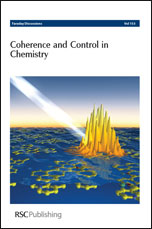Quantum dynamics in photobiology is a highly controversial subject of modern research. In particular, the role of low-frequency vibrational coherence of biochromophores has been intensely discussed. Coherent control of polyenic chromophores, like carotenoids and retinoids, has been showing that the manipulation of such low frequency coherences may play a crucial role in the evolution of excited population and therefore in the efficiency of photosynthesis. However, no precise control mechanism has been derived. In order to clarify this open question, we combined quantum dynamical modelling with a sensitive experimental technique, namely Pump-Degenerate Four Wave Mixing (Pump-DFWM). In this work we investigate in detail the internal conversion channel of β-carotene, an important polyenic chromophore, under multipulse excitation and focus on the role of the non-adiabatic coupling between excited-state potentials and the internal energy loss. Our control mechanism is based on the interference between wavepackets in the excited state, which leads to a transient evolution of the vibrational population dependent on the relative phase between excitation sub-pulses. Such a transient evolution can affect the branching ratio between competing channels in the excited state. Therefore, our results are able to rationalize pulse shapes found in a whole class of coherent control experiments involving polyenic biochromophores, like in light harvesting complexes and in bacteriorhodopsin.
You have access to this article
 Please wait while we load your content...
Something went wrong. Try again?
Please wait while we load your content...
Something went wrong. Try again?

 Please wait while we load your content...
Please wait while we load your content...